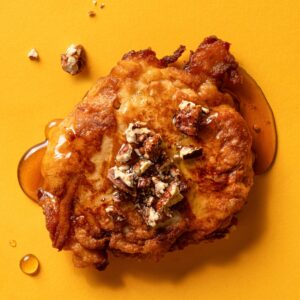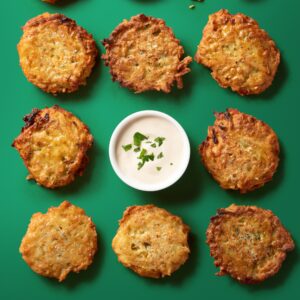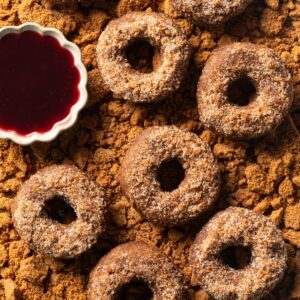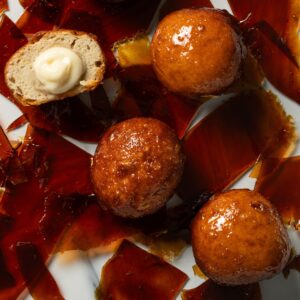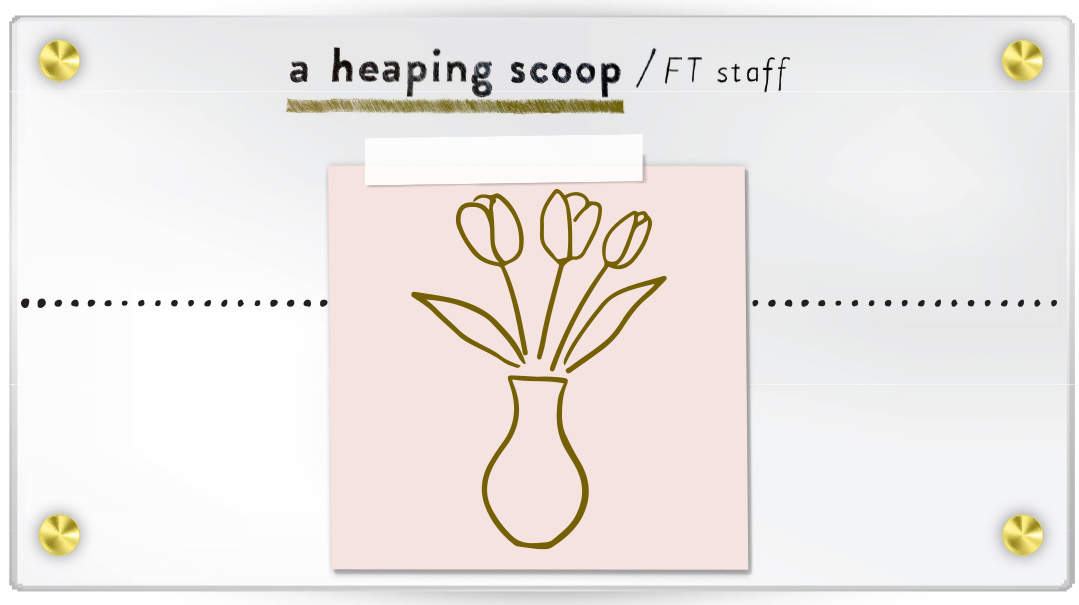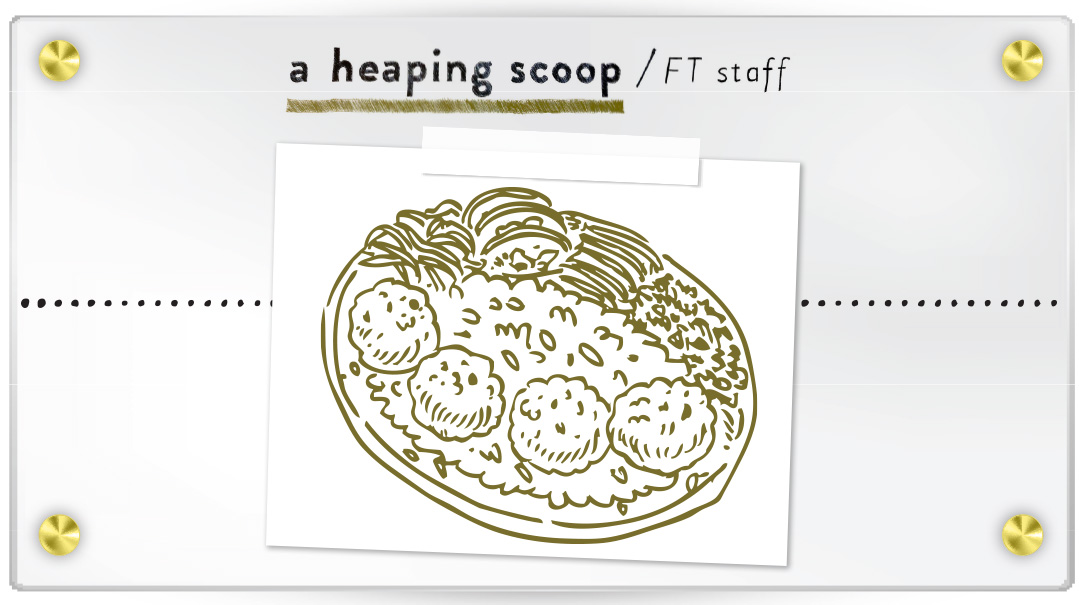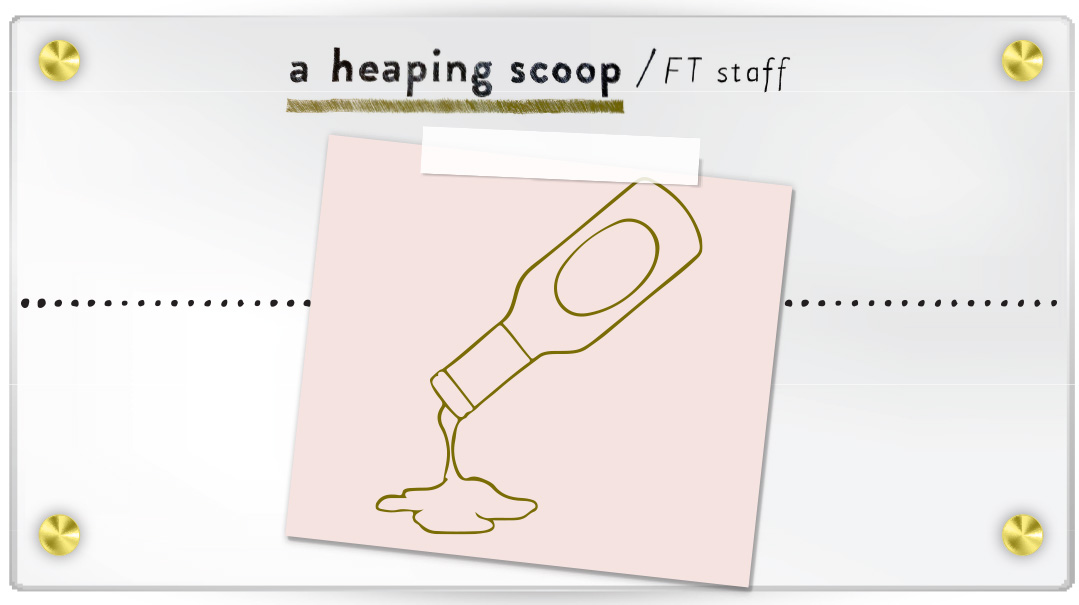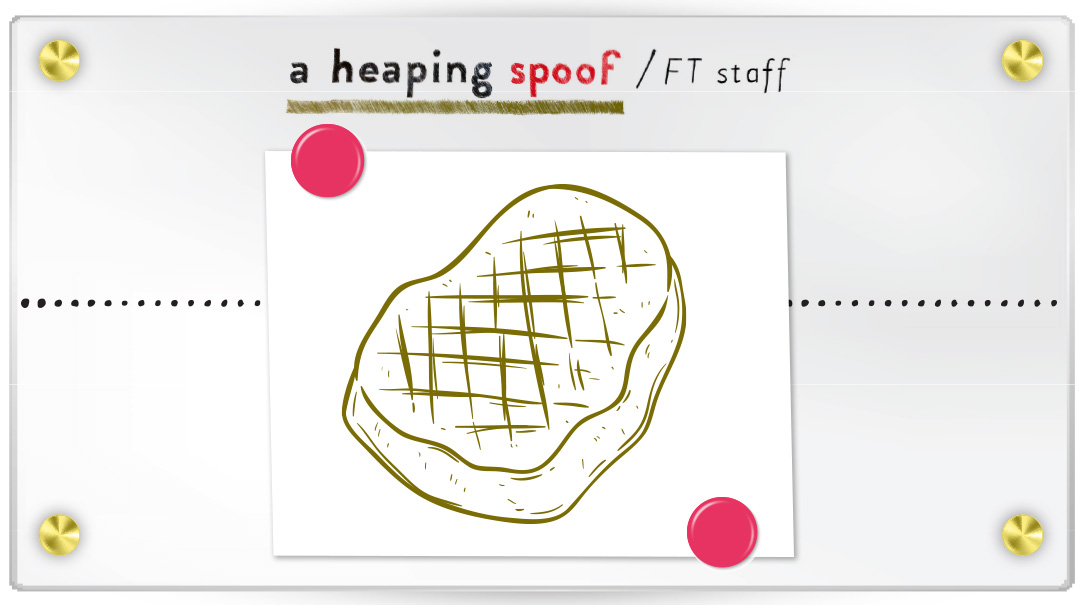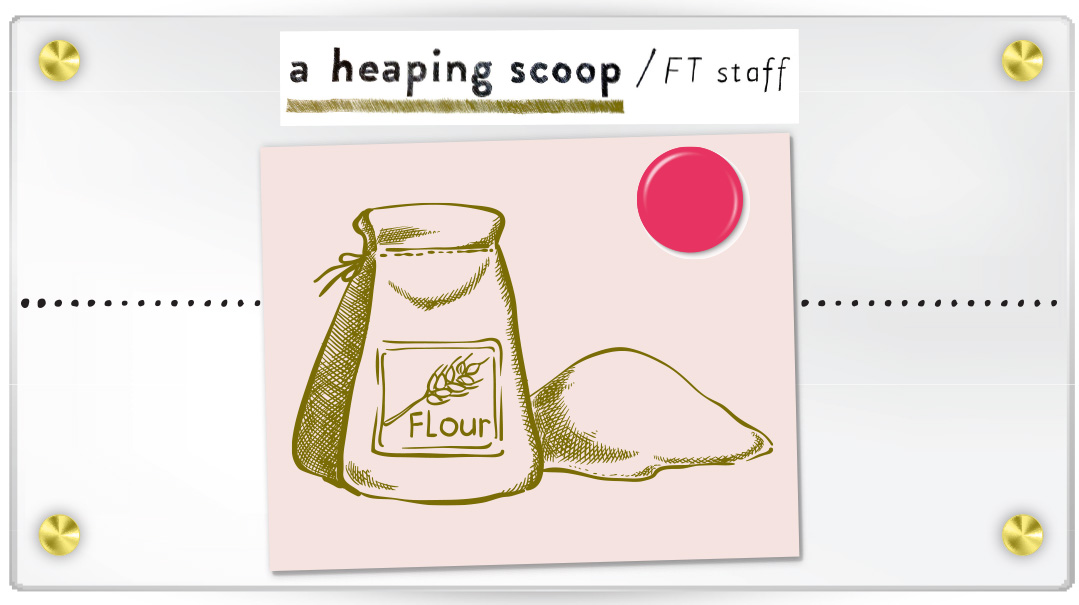Heaping Scoop
| December 16, 2020
Reader Feedback (This Way / That Way, Issue 715)
I loved your gefilte fish loaf upgrades, and would love to share one I got from a neighbor on a WhatsApp group. This recipe was posted by Elaine Meyers on our Har Nof group. It’s incredibly easy and very tasty.
Sweet and Sour Sauce for Gefilte Fish Loaf
Mix 1 6-oz (170-g) can tomato paste with water to fill the empty can and 1 Tbsp each of soy sauce, vinegar (preferably balsamic), and honey or silan.
Defrost the frozen loaves just enough to peel off the paper easily. Oil a baking dish (I prefer glass), add a thin layer of the sauce, and place the loaves on top. Pour the remaining sauce over them. Bake until the fish seems ready — you don’t want it to burn on top. You can cover it for first 30–40 minutes, then uncover for 20. I check it with a toothpick, just like a cake!
I double this recipe to cover three loaves. It freezes beautifully.
My daughter Bassi says her “go-to” sauce for the loaves is what we call Russian dressing — a mixture of mayonnaise, ketchup, and lemon juice, to taste. I thought you might also try that instead of the plain mayo in the baked breaded gefilte fish, as I’ve seen that in recipes for chicken — so why not for fish?
—Nechama Burnham
Easiest Grilled Chicken
Montreal steak seasoning + paprika + lemon zest (or juice). Grill on both sides. Enjoy.
—Danielle Renov
Secret Weapon Ingredient
Dried chile peppers are underrated. Most people are scared that they’re too spicy, but a mild chile pepper makes other flavors pop and adds a bold finishing touch to your food.
—Sina Mizrahi
What is your go-to dessert to serve to guests on Shabbos?
Awesome parve ice cream!! (Shhhh.) Of course, I dress it up with some pantry staples — chocolate syrup, crushed cookies, or a new favorite, Pure Foods chocolate sesame butter!
—Faigy Grossmann
What’s your favorite method for oven-roasted vegetables?
Preheat your oven to 400°F (200°C), toss veggies with oil and spices (I like Montreal steak spice), lay in a single layer on a lined baking sheet, and roast until the edges start browning. I like to leave some vegetables — like cauliflower, broccoli, carrots, and onions — in the oven for longer, as they soften and caramelize. I try to mix the colors and variety for a beautiful medley, and I serve them as a side dish or as a salad topper.
You can also roast fruit, like pears and grapes. Coat them in savory spices, like salt, pepper, and paprika, or in some sugar and cinnamon, if you prefer sweet.
—Estee Kafra
Review It!
There’s this amazing new restaurant, Rothschild TLV on the Upper West Side (OU hechsher). I highly recommend their short rib pizza. It’s the best!
—Shevy Shanik
Halacha Question:
When do I need to use an inverted pan on a blech on Shabbos?
If you wish to warm up cold, dry chicken, kugel, or similar foods, which are completely cooked or baked before Shabbos, and you have a flame that’s covered with a blech, or a Shabbos hot plate that’s covered with at least one layer of heavy-duty silver foil, you may take an empty pan, turn it over, and place the chicken or kugel on top of it to warm up the food. This is permitted even if the food will reach yad soledes bo temperatures.
This is not permitted if the food wasn’t completely cooked before Shabbos, or even if it was completely cooked but the food is not completely solid and dry, e.g., there’s sauce in the chicken pan.
Note: All foods contain some internal liquid, and some of it will ooze out when it’s heated. But as long as the food is completely, or nearly completely, surface dry, it’s considered dry and is permitted to be heated on Shabbos in the manner described.
Answered by Rav Doniel Neustadt
(Originally featured in Family Table, Issue 722)
Oops! We could not locate your form.

